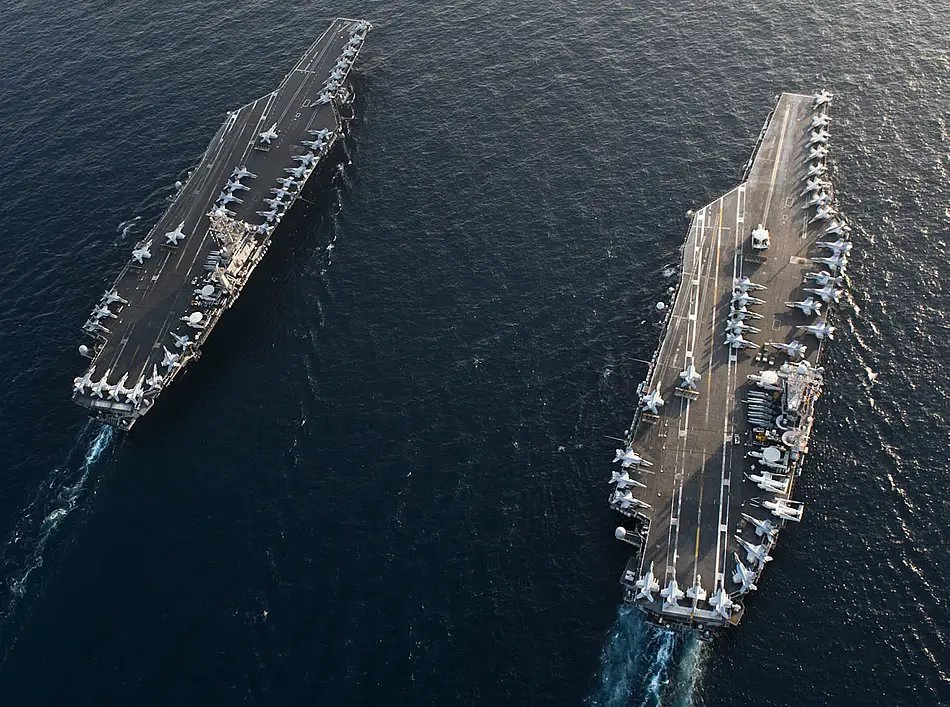
Posted on 07/03/2014 5:47:27 AM PDT by sukhoi-30mki

The Queen is about to name the first of the UK's controversial new-generation aircraft carriers in a ceremony at Rosyth. But a plan for a super-carrier five decades ago ended in acrimony.
HMS Queen Elizabeth is a major milestone for the Royal Navy and for British defence.
It also provides a strong echo with the past, and the Royal Navy's last - failed - bid for a new-generation of full-size aircraft carriers half a century ago. The first of those ships was designated CVA-01. Like the new ship, she would have been called HMS Queen Elizabeth. But she was the carrier that never was.
Pretty much all that remains of her - apart from a few architect drawings and artist impressions - is a model in a storeroom at the Fleet Air Arm museum at Yeovilton. But her saga has huge resonance for today.
Like the new HMS Queen Elizabeth, she would have been the largest warship ever built for the Royal Navy. About the same size, at 55,000 tons compared with 65,000 tons for today's ship, 963ft long compared with 930ft, and capable of carrying about 40 aircraft.


Meant to replace the navy's then ageing carrier fleet, she would have been a radical new design for her day, with a new 3D radar, a novel flight deck arrangement, and other innovations. Like the new carriers, she was also hugely controversial and the subject of bitter inter-service rivalry, with arguments over whether she was too large and too ambitious.
But, unlike the new ships, she was cancelled in 1966 before an order was ever placed.
(Excerpt) Read more at bbc.com ...
What’s with the 2 “Islands” on the new carrier? Most carriers I’ve seen only have 1.
CC
The HMS Queen Elizabeth and HMS Prince of Wales will have increased survivability as a result of the separation and distribution of power generation machinery throughout each ship. The class has been designed with twin islands, which separates the running of the ship from the flying operations resulting in greater visibility of flying operations.
http://www.aircraftcarrieralliance.co.uk/the-ships/the-queen-elizabeth-class.aspx
Why the launch catapult in the landing strip? The whole point of the angled deck was to keep launches and landings physically separated wasn’t it???
One is for flight operations, the other is ship command and control.
The finest ideas brit technology and engineering have to offer.
In other words, the best they could come up with.
With your obvious knowledge of military equipment, I wish you would post a piece about the SU-25 Frogfoot that’s been delivered to Iraq. The sense I’ve developed of it is that the airplane is sort of the Russian version of the US A-10 Warthog?
Actually, the Su-25 is closer to being the Russian version of the A-9, which was the Northrop design that lost to the A-10.
See below:

Pardon the huge image, but it shows some interesting things:

The bow area is too small to support two catapults for effective cyclic operations, plus running the risk that combat damage would take out both catapults, rendering the ship incapable of launching any aircraft.
Both catapults would only be used during large launch operations (Alpha Strike-type ops), otherwise the waist cat is mostly a spare or supplemental launch option.
Thanks!
Thanks, that second pic really illustrates my point about cyclic ops than words can.
The CVA-01 design, like the French CV designs, allows launcing aircraft to be spotted on the bow and pulled back for launch, while landing aircraft are moved off to the right of the landing area and parked or struck into the hangar.
Note how, in that pic, aircraft are spotted on the carriers’ bow over the starboard catapult. Rendering it unusable until they are moved.
<img src="http://www.strategypage.com/gallery/images/stennis-lincoln-01-2012.jpg" width="100%">

Really, positions/distance should be expressed in percent or em's. End Hobby Horse.
 |
Freedom ≠ Free Stuff☭ |  |
| I, for one, welcome our new Cybernetic Overlords /. | ||
|
|
||
Well, anybody’s fine ideas are the best they could come up with. The Brits do understand aircraft carriers—during WWII their carriers had steel decks while ours had wood, and I believe the steam catapult is their idea as well. That said, the RN is a pale shadow of what it was and no doubt they have to ‘make do’ with less than what they want.
It also separates (potentially) duplicated functions for greater survivability.
The catapult is aligned with the bow ramp, which helps a heavily loaded VTOL-capable aircraft (Harrier, F-35) take off without using as much fuel.
The Brit carriers having armored flightdecks mitigated a lot of combat damage, but it also resulted in a smaller airwing. And, actually, it was the other way around: the RN rec’d very small allotments of aircraft predictable war. So they built ships where the precious aircraft could be better protected since they alone wouldn’t be enough to defend the ship if it were attacked.
The USN didn’t have a dedicated Air Force (like the RAF) restricting the number of aircraft it could buy. So went for the larger airwing which, in theory, would limit the risk of the ship getting hit by taking out any attacker first.
And, while the Brits did come up with the steam catapult, angled deck and fresnel landing system, they also had some real stinkers. Like rubber inflatable decks that allowed wheel-less belly landings.
Disclaimer: Opinions posted on Free Republic are those of the individual posters and do not necessarily represent the opinion of Free Republic or its management. All materials posted herein are protected by copyright law and the exemption for fair use of copyrighted works.